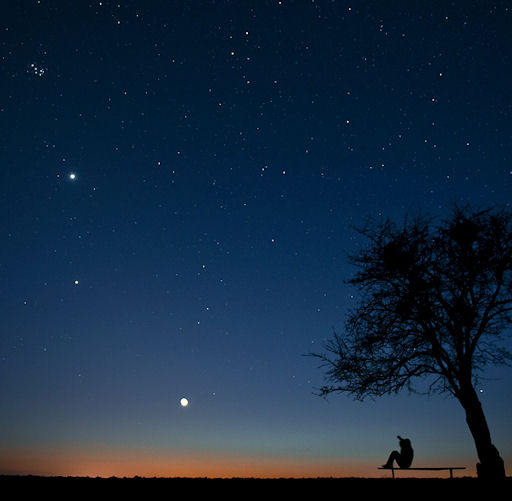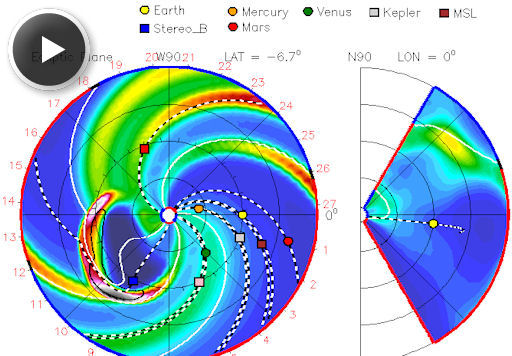| What's up in space | ||||
MIDNIGHT
ROCKET PLUMES: On
Tuesday, March 27th, between midnight and 3 am EDT, NASA plans a rapid-fire launch of five sounding rockets from the Wallops Flight Facility in Virginia. The rockets will deliver a chemical tracer to the upper reaches of Earth's atmosphere, forming milky white plumes that reveal high-speed winds at the edge of space. The display should be visible to the naked eye from coastal areas between South Carolina and New Jersey. [full story] [updates]
SUNSET
SKY SHOW, AGAIN: A month
ago, Venus, Jupiter and the crescent Moon aligned beautifully for evening sky watchers around the world. Tonight it's happening again. On March 25th and 26th, the trio will appear side by side in the western sky at sunset. Marek Nikodem photographed the Moon making a beeline for the planets over Szubin, Poland, on March 24th:
Observing tip: Try catching them before
the sky fades completely black. Bright planets are extra-beautiful when they are framed by twilight blue. Sky maps: March 25, March 26.
more images: from
Toke Brødsgaard of
Nuuk, Greenland; from Evan Ludes of Omaha, Nebraska; from Mara Reed of Wall, South Dakota; from Jim Tegerdine of Marysville, Washington; from Dr. Fritz Helmut Hemmerich of Tenerife, Canary Islands; from Stefano De Rosa of Avigliana, Italy; from Adrian New of San Antonio, Texas
INCREDIBLE
SUNSPOT AR1429: Big
sunspot AR1429, the source of so many strong flares and geomagnetic storms earlier this month, is still erupting. The active region produced a significant coronal mass ejection on March 24th at 00:39 UT: movie. Because of the sunspot's location on the farside of the sun, this particular CME will not hit Earth. An animated forecast track prepared by analysts at the Goddard Space Weather Lab shows the trajectory of the expanding cloud:
The leading edge of the CME is expected
to arrive at the STEREO-B spacecraft on March 25th at 13:08 UT (+/- 7 hours). None of the inner planets will be affected.
Since March began, sunspot AR1429
has
propelled CMEs into every corner of the solar system, stirring up stormy space weather around every planet and spacecraft. If the sunspot remains active for another week or so, it will turn back toward Earth for a new round of geoeffective eruptions. Stay tuned. |




No hay comentarios:
Publicar un comentario